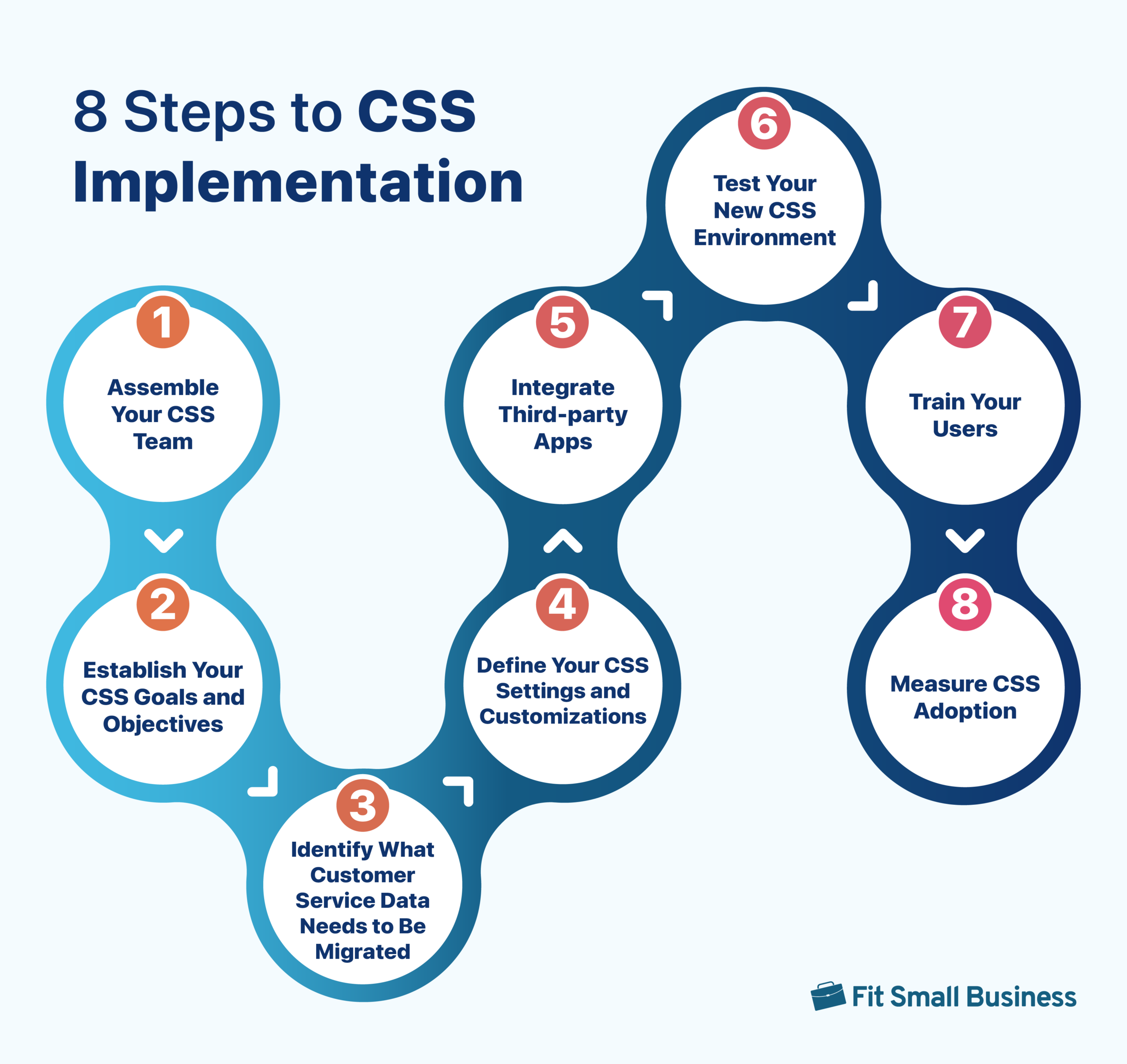Customer response time (CRT) is a critical customer metric on the length of time your staff responds to a customer’s question, inquiry, or request. Answering a customer’s inquiry quickly and accurately builds trust and customer loyalty. Thus, customer service teams must use the right tools to help them provide accurate answers to customers’ questions.
Features such as auto-responders, email templates, and live chats or chatbots found in customer relationship management (CRM) software can help streamline customer service processes and improve the overall customer experience. We explore the best ways to reduce customer response time for customer service teams below.
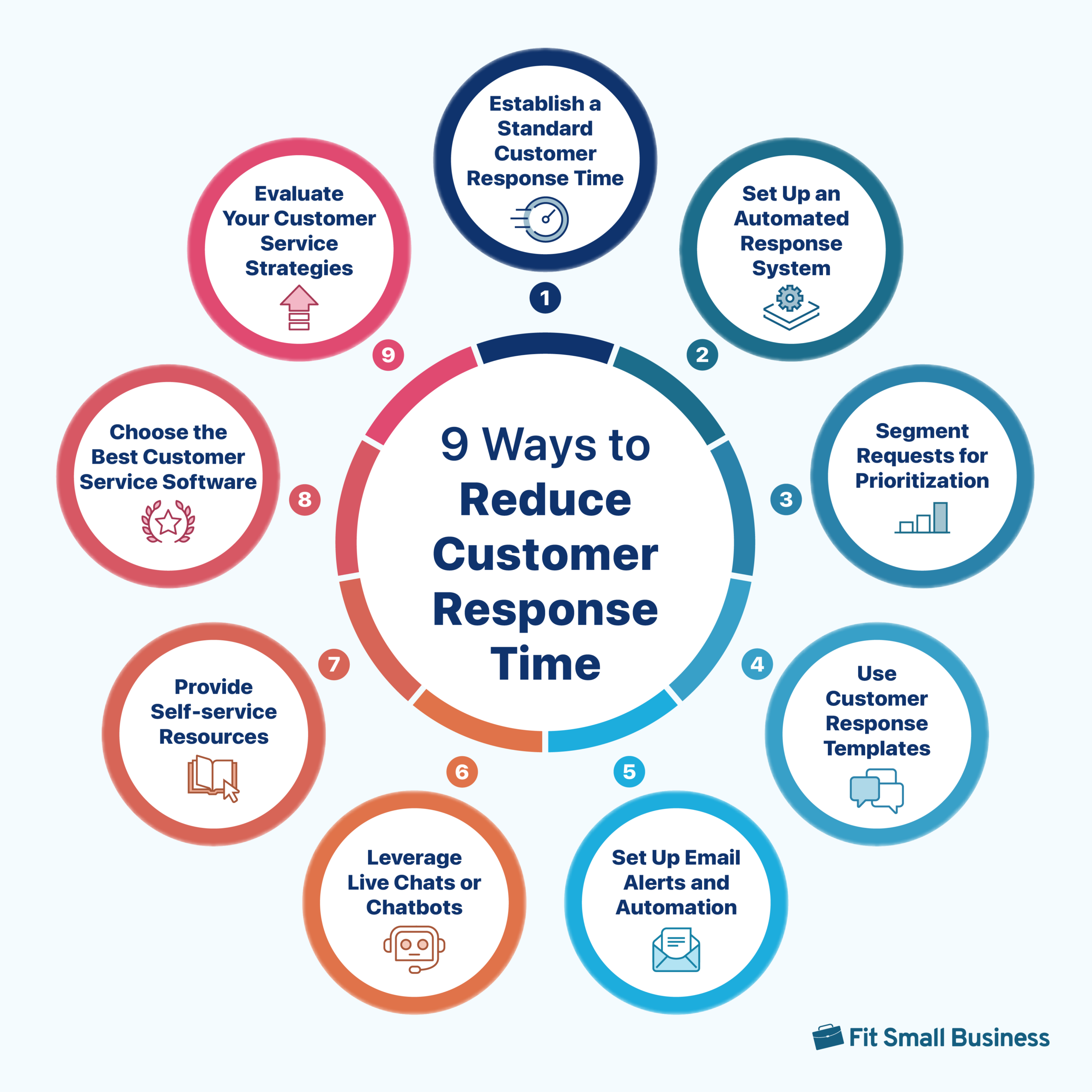
1. Establish a Standard Customer Response Time
Setting standard parameters is a critical aspect of reducing customer response time. One way to achieve this goal is to determine your industry’s benchmark and compare it with your company’s results, apples-to-apples. About 46% of customers expect companies to respond quicker than four hours and 12% expect a response within 15 minutes or less.
Measure the following expert-recommended customer service key performance indicators (KPIs) to reduce your customer response time:
One of the most important metrics to understand your customer service team’s performance is the average first response time (FRT). FRT measures the time between when the ticket was submitted and when the customer support agent first responded. In sales, the acceptable lead response time via phone call is five minutes or less.
To calculate the average FRT, you can use the formula:
Let’s say you’re monitoring the FRT of your team from 9:00 a.m. to 10:00 a.m. Assume your team resolved 20 support tickets and the total time taken to respond to those tickets was 300 minutes. Using the values given:
300 minutes / 20 tickets = 15 minutes per ticket
One of the ways to measure customer service satisfaction is by evaluating your case resolution duration, in which average handling time (AHT) plays an important role. AHT is the length of time a customer service or sales rep completes an interaction with a potential or existing customer over the phone. This metric constitutes talk, hold, and transfer time, as well as the time the rep took to finish service tasks after the call.
To calculate your AHT, you can use the formula:
| Total talk time + Total hold time + Total transfer time + Total post-call service tasks time Total number of calls | = | AHT |
If, for example, your customer service team handled 100 calls last Friday, with a total talk time of 500 minutes, a total hold time of 100 minutes, a total transfer time of 50 minutes, and a total post-call service tasks time of 200 minutes. Using the formula, the answer is 8.5 minutes per call (AHT).
Resolution time measures the duration from when a customer submits a request or files a complaint to the moment it is resolved. While RT is not necessarily a metric for response time, we decided to include it because it affects the overall customer experience. While FRT measures the speed of the first response, RT gauges the overall time it took for the customer’s issue to be fully resolved. Hence, this metric has a direct impact on customer retention rate.
To calculate RT, you must sum up the total time taken to resolve all requests and then divide it by the number of requests processed. Here’s the formula:
Suppose a customer support team resolved 50 support tickets in a day. The total time taken to resolve these tickets, including interactions with customers, research, and any necessary follow-up, was 500 hours. Using the values given:
500 hours / 50 tickets = 10 hours per ticket
Pro tip: Customer service software (CSS) like Zoho Desk and Freshdesk have core advanced analytics and can generate accurate key performance indicator (KPI) reports to help customer support teams set new goals, monitor performance, and collaborate on reducing CRT. The same is true with customer relationship management (CRM) systems like HubSpot CRM.
2. Set Up an Automated Response System
Automated response systems employ artificial intelligence (AI) and natural language tools to collect contextual information, build workflows, and recommend mitigation processes. Customer service managers can use them to assign tickets to reps quickly. Hence, customer support teams can leverage this technology to reduce customer wait times.
Auto-responder software tools provide a predetermined response with related hardware such as a voice-over-internet-protocol (VoIP) phone, computer, and internet or intranet equipment. An auto-responder automates messages coming from email, social media, and other communication platforms. Here’s an example of a quality automated email message:
“Rest assured that your message has been received, and our dedicated sales representatives are eager to provide you with the information and support you need. We aim to respond to all inquiries within 24 hours. However, if your message was sent during non-business hours, please allow until the next business day for a response.
“In the meantime, we invite you to explore our product or service resources [embedded link] to learn more about how our products/services can meet your needs. If you would like to schedule a personalized demo of our products/services, please click here [embedded link] to book a convenient time.”
3. Segment Requests for Prioritization
Customer support teams must prioritize urgent tickets first, which involves assigning top performers to address critical inquiries from valued customers. Service level agreements (SLAs) are effective in prioritizing tickets, which can be customized based on time constraints and importance. SLAs complement CRM or customer service software (CSS) workflow automation, triggering notifications when SLAs are bound to expire. This helps prevent missed follow-ups or resolutions.
4. Use Customer Response Templates
Templates are ready-made documents that users can fill up to save time and respond to customers quickly. About 62% of companies don’t respond to customer emails and for those that do respond, their average CRT is 12 hours, wherein the slowest response is eight days or more. This leads to missed sales opportunities. With customer response templates, sales and customer service teams can provide fast response service.
A customer service rep can set up a customized template for a specific reoccurring problem. For instance, if the business offers an online tech solution, first-time users might need assistance in setting up their account for the free trial. Hence, having a template that already includes a link of the step-by-step guide for this procedure comes in handy every time a new customer asks for help. Check out our free customer service response templates here.
5. Set Up Email Alerts & Automation
Customer support teams usually receive inquiries from various sources, such as website contact forms, email, and social media direct messages and comments. These inquiries can easily be overlooked because the rep might need further research to provide an accurate answer. Sometimes, agents miss responding to some of the prospects, especially if they receive a lot of email inquiries. That’s when time-based email alerts become useful.
Many CSS and CRM software programs like Help Scout and ActiveCampaign have time-based email alerts and automation. Email alerts remind the rep how long a lead or customer has been waiting for an email response. In addition to alerts, automated emails can expedite customer response times by promptly acknowledging inquiries and actions.
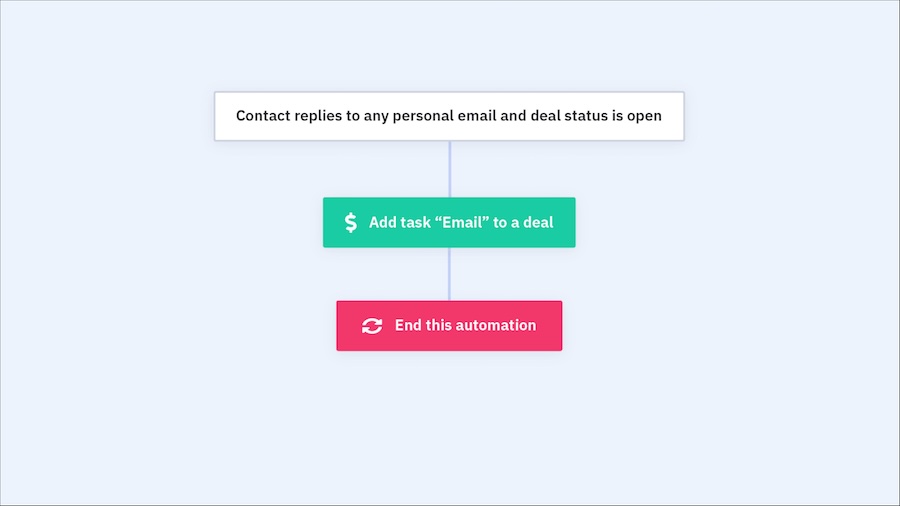
ActiveCampaign lets users set up email alerts. (Source: ActiveCampaign)
6. Leverage Live Chats or Chatbots
About 59% of customers choose self-service tools like chatbots to answer their simple questions. Chatbots or artificial intelligence (AI) bots interact with customers using automated responses. On the other hand, live chats are used for direct communication between customers and human agents. Read our chatbot vs live chat guide to find out which is better for your small business.
Chatbots respond better to routine inquiries and handle simple tasks like booking an appointment or sales demo in real time. On the other hand, live chat helps customers obtain immediate answers and resolutions, like filing service requests and checking ticket and order updates without having to call. Live chats can also help manage complex concerns requiring tailored support like initiating dispute requests on product returns and refunds.
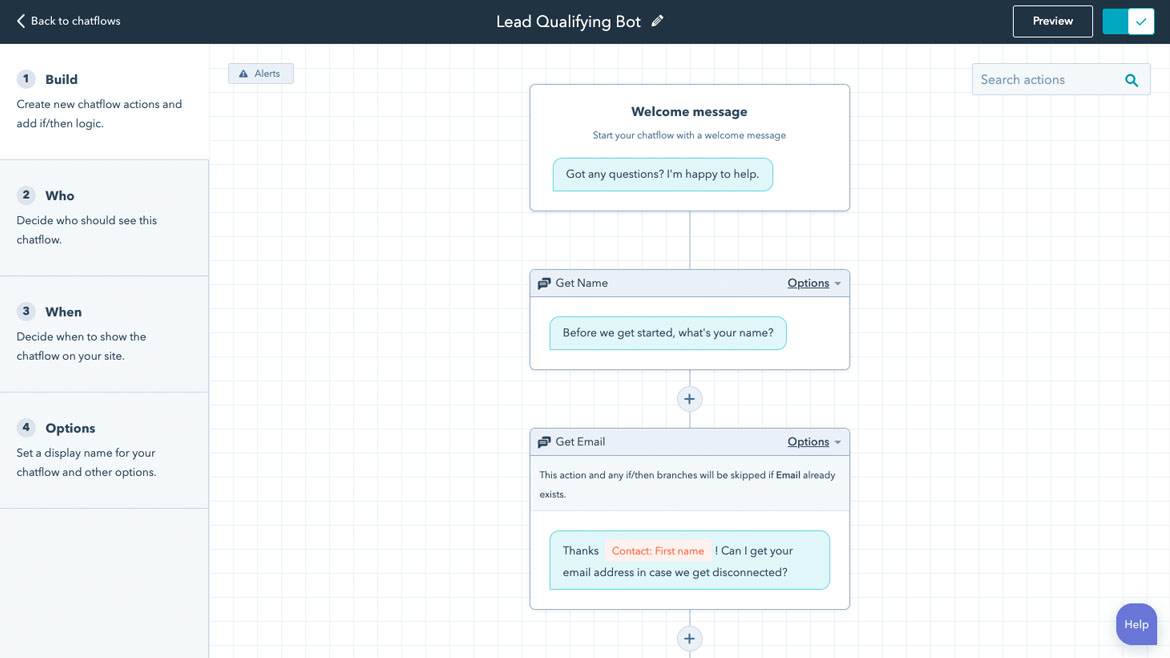
HubSpot’s free chatbot builder for customizing templates (Source: HubSpot)
7. Provide Self-service Resources
Self-service resources are online self-help content and tools that can be used to find answers, resolve problems, and order products and services. According to statistics, 100% of tech buyers prefer to use self-service tools and demand sellers to provide them. Providing instant access to information and solutions can help significantly reduce customer response time.
Let’s say a customer encounters a technical issue with a recently purchased electronic gadget from an online retail store. The customer can directly visit the store website’s support section and find a comprehensive frequently asked questions (FAQs) page addressing common technical issues. This leads to a shortened response time and an enhanced customer experience.
8. Choose the Best Customer Service Software
Customer support teams must use CSS to reduce customer response time. For instance, Zendesk has rich customer service tools like telephony and email ticketing, which reps can use to answer inquiries and requests promptly. Managers can monitor if all issues have been resolved or if there are customers waiting for responses, enhancing customer service. Check out our guide to customer service for small businesses.
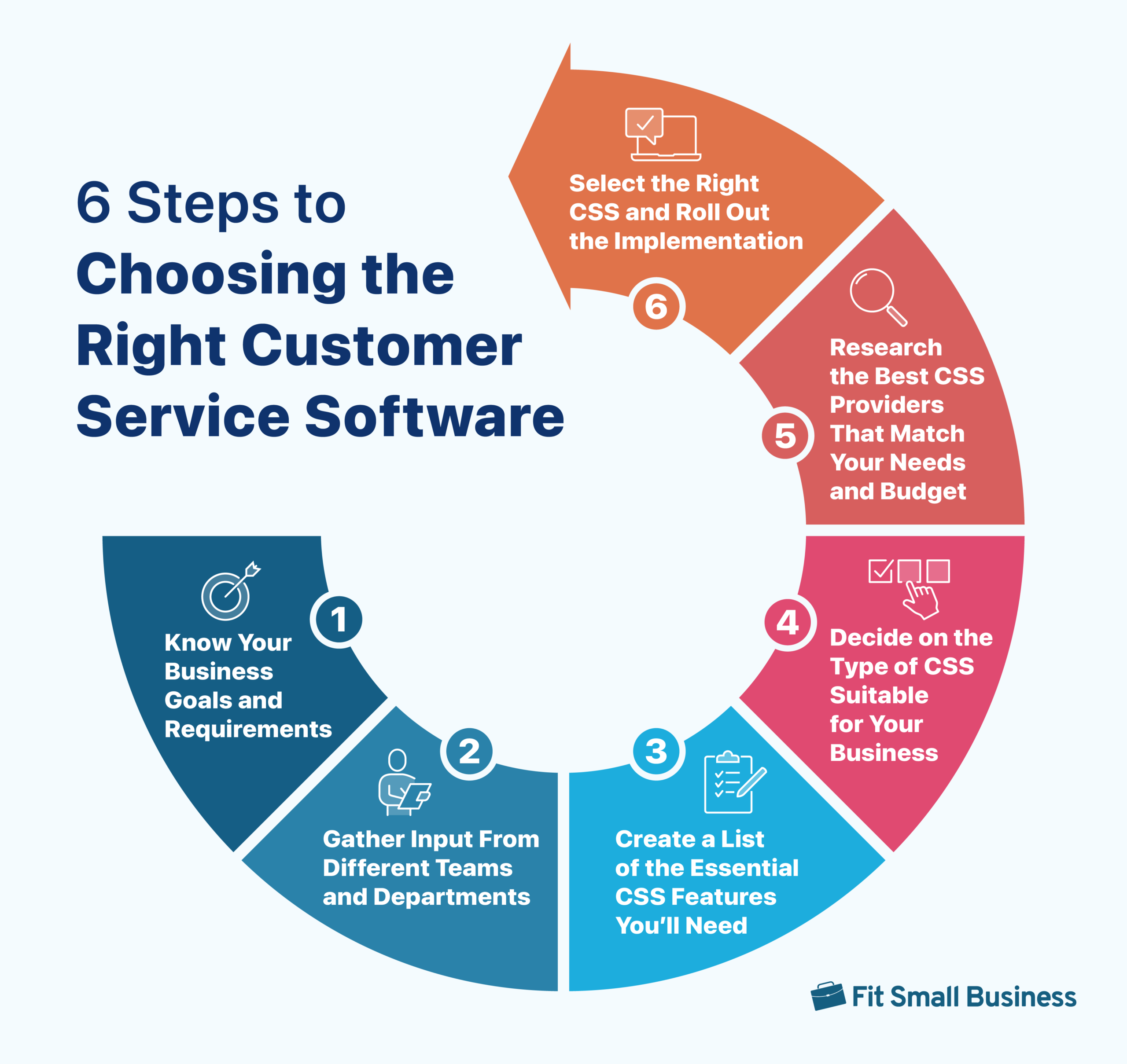
Here’s a step-by-step guide to choosing the right CSS:
Before looking for and choosing a CSS system, set objectives and think about the pain points you want the software to address. Customer service managers should evaluate their teams’ performance reports. Identify your customer service goals in the next one to two years.
Sales and marketing teams usually collaborate with customer service departments to attain shared goals. All these teams can use the same CSS system along with their specific department tools for streamlined customer outreach.
CSS software programs have telephony, help desk, ticketing, automation, reports, analytics, and other tools. But you don’t have to choose a CSS system with all the bells and whistles. Select CSS software with only the essential features you need. But also consider the system’s scalability if your business is expected to grow in one to two years.
Gathering input from different teams on the features you need can help you decide on the type of CSS suitable for your business requirements. But it’s also important to determine if you need a general or industry-specific CSS for particular business types, such as insurance, healthcare, real estate, finance, and hospitality.
There are different approaches to narrowing your CSS options down. You can obtain word-of-mouth referrals by asking peers, colleagues, and other business owners using the same CSS. Determine what they consider to be its advantages and drawbacks—and whether they highly recommend it. Other ways include reading trade magazines, web articles, and user reviews. Most importantly, sign up for a free demo to test the CSS yourself.
Once you’ve chosen and purchased the CSS, roll out its implementation and begin improving your customer support system. This includes the following steps:
- Assemble your CSS team: Customer service managers must set a meeting time and date to gather all customer support agents. This step also includes explaining the meeting’s agenda and setting proper expectations about the impact of the implementation on their job roles.
- Establish your CSS goals and objectives: This step involves gathering your team’s insights about specific goals like reducing customer response time and other objectives that CSS can resolve. Once you have asked everyone, you can create a shortlist of the most important goals and narrow them down by backing them up with data—which we discuss in the next subheading.
- Identify what customer service data needs to be migrated: CSS data includes your customers’ contact information, account value, lead type, messages, and analytical reports generated by your existing system. Determine if you must migrate all data, including old files, or only updated ones. This streamlines data migration and ensures your team can access all the information they need quickly in a centralized platform.
- Define your CSS settings and customizations: You have to define your company’s CSS settings and customize them based on your requirements. The CSS settings include general and core functionalities. Customer service systems usually include the company profile, admin settings, custom fields, user permissions, and menu selections.
- Integrate third-party apps: This stage enables your customer support team to access data and switch between apps without leaving the CSS platform.
- Test your new CSS environment: Next, you must check if the CSS works well for your team. It must be fully operational, ensuring that individual components or features are properly implemented.
- Train your users: Gather your customer service team and ask for their feedback about using the CSS platform. Get their feedback on user experience, features, and perceived benefits, especially if the platform is effective in reducing customer response time.
- Measure CSS adoption: The final stage of a CSS rollout implementation is metric monitoring, which measures the usage rate among end users. Determine the number of user logins and track customer data reps add to the system, as well as the CSS-generated reports and key performance indicators (KPIs) like calls made and deals closed.
Additionally, CRM systems have customer service features like incoming and outgoing calls, call recording, and emails. For example, Salesforce includes tools that reps can use to improve customer service. Choosing the right CRM and CSS for your small business involves choosing a provider that best suits your needs and is aligned with your priorities and budget.
9. Evaluate Your Customer Service Strategies
Assess your customer service strategies to determine knowledge and skills gaps among your customer service reps. A critical aspect of performance evaluation is calculating CRT. When customer support agents are aware of their CRT, they become more responsive to their managers’ recommendations to improve their performance.
Customer support teams can use customer service software time trackers to monitor their response time metrics. HubSpot CRM and Freshdesk are just a few examples of CRMs with time trackers. These tools can record and analyze your customer service metrics automatically, and your team won’t have to rely on digital sheets like Microsoft Excel and Google Sheets to calculate CRT.
The formula to calculate the average customer response time is:
Average Response Time = Total Response Time / Number of Responses
Sum up the response times for all inquiries and then divide that sum by the total number of inquiries to find the average response time. As an example, check the chart below:
Customer Inquiry | Date Received | Date Responded | Response Time |
Product Information | Jan 1 | Jan 2 | 24 hours |
Quotation Request | Jan 5 | Jan 7 | 48 hours |
Pricing Inquiry | Jan 10 | Jan 11 | 24 hours |
Demo Request | Jan 15 | Jan 17 | 48 hours |
Contract Negotiation | Jan 20 | Jan 21 | 24 hours |
Average | 33.6 hours |
Frequently Asked Questions
Customer response time is important in customer and sales teams because it helps capitalize on sales opportunities. Sales and customer service reps can quickly engage with leads when they’re most interested, increasing the likelihood of conversion.
Quick response times contribute significantly to customer satisfaction by demonstrating attentiveness and resolving issues efficiently. It fosters positive perceptions of the company’s commitment to customer service excellence.
A good response time is within four hours. However, customer service response times differ from one industry to another—such as 17 hours for retail and 14 hours for the financial sector. Therefore, every customer service team must establish a standard for measuring and reducing customer response times for successful implementation.
Bottom Line
The most effective ways to reduce customer response time include defining your goals and leveraging the right tech tools to provide customers with accurate answers and resolve their problems quickly. Customer service and sales teams in startups and small businesses can enhance their responsiveness to customers by maximizing the use of automation tools, like auto-responders and email reminders, and assisting them in accessing self-help resources.
